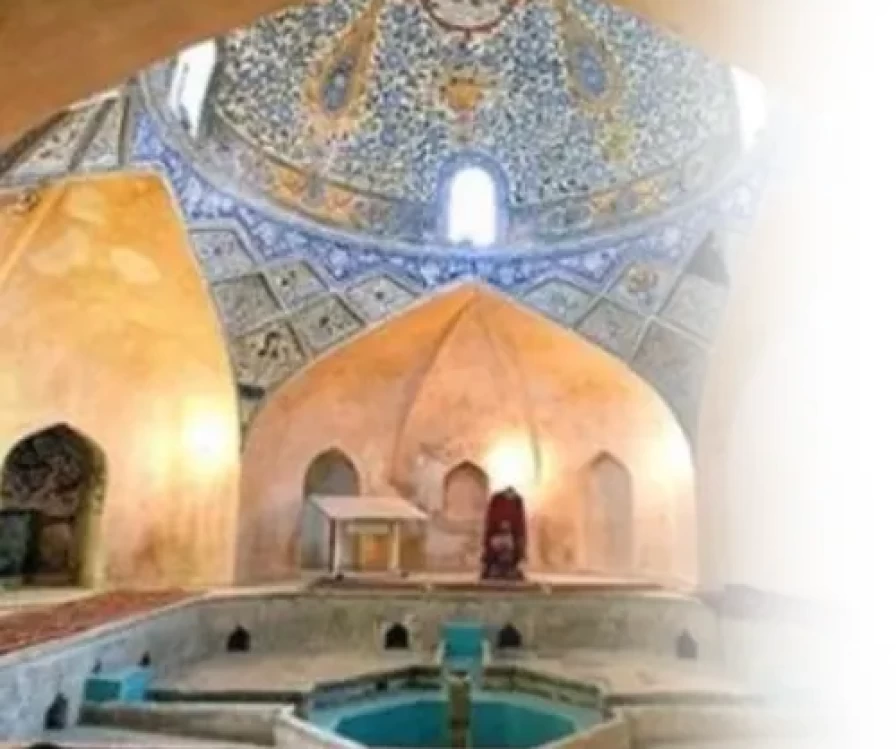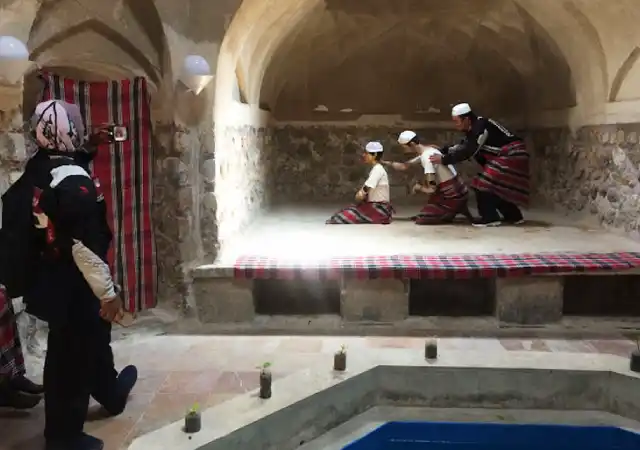
Galeh Dary Hamam





Galeh Dari Bathhouse
The Galeh Dari Bathhouse is one of the historical sites in Bandar Abbas, located in the central district of Bandar Abbas and one of the attractions of Hormozgan province in southern Iran. This bathhouse is situated in the Qaleh Shahi neighborhood of Bandar Abbas and is currently used as the Ethnological Museum of Hormozgan province. The Galeh Dari Bathhouse is mistakenly recognized as the only bathhouse in Bandar Abbas. In fact, it is the second bathhouse in the city, with the first historical bath being the Gapp Bathhouse. After the 1960s, with the introduction of piped water to Bandar Abbas, this bathhouse gradually fell into disuse until the early 1990s when the Cultural Heritage and Tourism Organization registered it as a national monument and restored it. After several rounds of renovation and reconstruction, it can now be visited as a national historical site.
The late Sheikh Ahmad Galeh Dari, a wealthy and charitable merchant of that time, established this bathhouse with the intention of providing social services to the people and dedicated it to the local mosque known as the Galeh Dari Mosque. The bath operated in two shifts for women and men, with the women's shift being completely reserved for them, allowing women to bathe with special ceremonies from morning until afternoon.
Due to the high humidity and climatic conditions of the region, the materials used in this building primarily consist of sponge sea stones, local sarooj (a type of mortar), and hand-pounded gypsum. It is worth mentioning that the sponge stones, which have a high
moisture absorption capacity, were sourced from the nearby sea. The only natural factor causing the degradation of the structure is the very high humidity of the area, and the materials used for the bath's floor are brick. In ancient times, architects had a thorough understanding of the resistance of materials and utilized them in the most optimal form available, mostly from local resources. For example, in some areas, they used lime sarooj, while in others, they used gypsum and plaster. Sarooj acts similarly to cement but remains "alive," reacting over time with the surrounding environment. It consists of many natural materials such as lime, clay, animal hair (including goat hair), egg yolk, turmeric, and various fruit juices, allowing for controlled hardening time.
Although gypsum is a very good and suitable material, it should be noted that it swells and deteriorates in high humidity. For areas of the bath where soap water was used, hard stones like marble were employed. However, due to the lack of transportation means, it was common for most buildings to be constructed using local stones and materials, with the exception of some sea stones that were naturally resistant to moisture.
The overall structure of this building follows the architectural style of the Qajar period. At the entrance of the building, there is a space for changing clothes, designed to create a local temperature equilibrium. This area includes a place for shoes and allows for changing clothes and acclimatization. This section, known as the "bineh," provides a suitable space for acclimatization, preparing the body for entering the warm environment. The bineh in the Galeh Dari Bathhouse is octagonal and offers a very beautiful and suitable space for users. Inside the bineh, located at the end of the entrance corridor, there are four benches or platforms for sitting. Beneath these platforms, there are spaces for placing shoes, which are often dirty. In the center of this area, there is a shallow octagonal pool.
The interior space designated for washing is known as the sarbineh. This area includes the sarbineh, warm room, and khazineh (water reservoir). The Galeh Dari Bathhouse features five large and small domes that provide ample space for washing. The sarbineh connects to the bineh and the warm room, which is filled with steam. The overall structure of the bathhouse is designed so that warm air is well distributed throughout all areas, creating a warm and comfortable environment for users.
The khazineh is the place where water is heated for the bath. In the khazineh, channels made of stone and sarooj were designed to transfer hot water to all spaces.
The heating system of the bath includes a fuel storage area, a fireplace, a boiler, chimneys, and an ash pit. The heating space is located underground to maintain warmth. The water used in the bath was supplied from a well that is ten meters deep and still exists. At one time, water from a pond (water reservoir) was also used to supply the bath, and this was done using the help of oxen that moved along a path (known locally as "gavo" or "gavchi") through a well wheel system. This way, water was drawn from the bottom of the well and flowed through stone and sarooj channels into the khazineh.
In the center of the bathhouse ceiling, there are openings that serve as skylights in each space, allowing for natural light and ventilation. By opening and closing these openings during different seasons, the temperature and humidity inside the bath could be adjusted. For many years, this building became a deserted place. In recent years, the Cultural Heritage Organization of Hormozgan province has aimed to preserve, restore, and renovate this valuable structure to serve as a museum of ethnology for the province.
In 2000, statues were installed for the first time, adding vibrancy to the bathhouse. It is worth mentioning that in the past, to heat the bath water, desert shrubs and anything combustible were used, and in Hormozgan province, palm tree remnants and dry branches were certainly utilized. The place where the fireplace was located was called "tiun," and the person responsible for burning the dry materials was referred to as "tiun tab." In fact, tiun is a type of very large copper vessel made by hammering copper into a bowl shape, allowing for high thermal conductivity to transfer heat from the burning wood and debris to the water inside the tiun. Gradually, the water in the tiun would heat up, and through convection, the water in the khazineh, which was shaped like a medium to large pool depending on the size and current conditions, would also be heated. To insulate the tiun and the pool's bottom and seal it, sarooj was used. In large bathhouses, three pools or khazinehs were typically used: the first for cool or cold water, the second for warm water, and the third for very hot water. The warm air generated from the burning materials was distributed through channels in the bath's floor, effectively warming the floor. In this way, warm air circulated through the channels and exited through tall chimneys.
You might think that the bathhouse was merely a place for washing, but that would be a misunderstanding. The bathhouse served as a venue for gatherings, celebrations, leisure, and many military and political decisions. Iran has always been a crossroads of civilizations and a site of conflicts and wars, and the only places that did not raise the suspicion of invading governments were bathhouses and mosques.
Therefore, various ceremonies took place in the bathhouse, such as wedding baths, circumcision baths, and various festivities, which required a significant amount of time. Because people spent long hours in the bath, efforts were made to adorn the interior with various tile work, plasterwork, paintings, statues, and sculptures. The bathhouse goes beyond the concept that Westerners and many non-native individuals might have. Its structure has much to say. The next time you plan to travel to various parts of Iran, including Hormozgan province, be sure to visit the historical bathhouses, including the Galeh Dari Bathhouse. It is definitely worth dedicating some time to it. The Sana Persian team hopes to meet you at the Galeh Dari Bathhouse in Hormozgan province in the near future. Looking forward to that day!
Contact Us
+989054577261